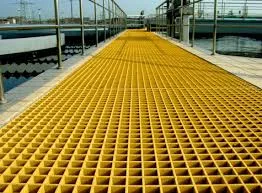
-
 Afrikaans
Afrikaans -
 Albanian
Albanian -
 Amharic
Amharic -
 Arabic
Arabic -
 Armenian
Armenian -
 Azerbaijani
Azerbaijani -
 Basque
Basque -
 Belarusian
Belarusian -
 Bengali
Bengali -
 Bosnian
Bosnian -
 Bulgarian
Bulgarian -
 Catalan
Catalan -
 Cebuano
Cebuano -
 China
China -
 China (Taiwan)
China (Taiwan) -
 Corsican
Corsican -
 Croatian
Croatian -
 Czech
Czech -
 Danish
Danish -
 Dutch
Dutch -
 English
English -
 Esperanto
Esperanto -
 Estonian
Estonian -
 Finnish
Finnish -
 French
French -
 Frisian
Frisian -
 Galician
Galician -
 Georgian
Georgian -
 German
German -
 Greek
Greek -
 Gujarati
Gujarati -
 Haitian Creole
Haitian Creole -
 hausa
hausa -
 hawaiian
hawaiian -
 Hebrew
Hebrew -
 Hindi
Hindi -
 Miao
Miao -
 Hungarian
Hungarian -
 Icelandic
Icelandic -
 igbo
igbo -
 Indonesian
Indonesian -
 irish
irish -
 Italian
Italian -
 Japanese
Japanese -
 Javanese
Javanese -
 Kannada
Kannada -
 kazakh
kazakh -
 Khmer
Khmer -
 Rwandese
Rwandese -
 Korean
Korean -
 Kurdish
Kurdish -
 Kyrgyz
Kyrgyz -
 Lao
Lao -
 Latin
Latin -
 Latvian
Latvian -
 Lithuanian
Lithuanian -
 Luxembourgish
Luxembourgish -
 Macedonian
Macedonian -
 Malgashi
Malgashi -
 Malay
Malay -
 Malayalam
Malayalam -
 Maltese
Maltese -
 Maori
Maori -
 Marathi
Marathi -
 Mongolian
Mongolian -
 Myanmar
Myanmar -
 Nepali
Nepali -
 Norwegian
Norwegian -
 Norwegian
Norwegian -
 Occitan
Occitan -
 Pashto
Pashto -
 Persian
Persian -
 Polish
Polish -
 Portuguese
Portuguese -
 Punjabi
Punjabi -
 Romanian
Romanian -
 Russian
Russian -
 Samoan
Samoan -
 Scottish Gaelic
Scottish Gaelic -
 Serbian
Serbian -
 Sesotho
Sesotho -
 Shona
Shona -
 Sindhi
Sindhi -
 Sinhala
Sinhala -
 Slovak
Slovak -
 Slovenian
Slovenian -
 Somali
Somali -
 Spanish
Spanish -
 Sundanese
Sundanese -
 Swahili
Swahili -
 Swedish
Swedish -
 Tagalog
Tagalog -
 Tajik
Tajik -
 Tamil
Tamil -
 Tatar
Tatar -
 Telugu
Telugu -
 Thai
Thai -
 Turkish
Turkish -
 Turkmen
Turkmen -
 Ukrainian
Ukrainian -
 Urdu
Urdu -
 Uighur
Uighur -
 Uzbek
Uzbek -
 Vietnamese
Vietnamese -
 Welsh
Welsh -
 Bantu
Bantu -
 Yiddish
Yiddish -
 Yoruba
Yoruba -
 Zulu
Zulu
The significance of FRP launders in contemporary water treatment systems
The Importance of FRP Launder in Modern Water Treatment
In recent years, the need for efficient and sustainable water treatment solutions has become more pronounced due to increasing urbanization, industrialization, and a growing population. As a result, various technologies and materials have emerged to enhance water treatment processes. Among these innovations, the use of Fiber Reinforced Polymer (FRP) launder systems has gained significant attention in modern water treatment facilities. This article explores the importance of FRP launder in the context of contemporary water treatment practices.
Understanding FRP Launders
FRP, or Fiber Reinforced Polymer, is a composite material made of a polymer matrix reinforced with fibers, typically glass or carbon fibers. This combination offers a unique set of properties, including high strength-to-weight ratios, corrosion resistance, and design flexibility. In water treatment plants, launder systems are crucial components that facilitate the efficient collection and conveyance of treated water, often referred to as effluent or filtrate.
Traditionally, launders have been constructed primarily from concrete or metal, which, despite their durability, can present issues such as corrosion, heavy weight, and the need for extensive maintenance
. FRP launders address these concerns and present several benefits that make them ideal for modern water treatment applications.Advantages of FRP Launders
1. Corrosion Resistance One of the most significant benefits of FRP launders is their resistance to corrosion. Water treatment processes often involve harsh chemicals and environmental conditions that can lead to the deterioration of traditional materials. FRP's ability to withstand these aggressive elements ensures longevity and reduces the need for frequent replacements, ultimately lowering operational costs.
the importance of frp launder in modern water treatment

2. Lightweight Design The lightweight nature of FRP makes it easier to handle and install compared to traditional materials. This characteristic reduces installation time and labor costs, which are critical factors in the construction and maintenance of water treatment facilities. Moreover, the reduced weight helps in minimizing structural requirements, leading to potential savings in the overall design of treatment plants.
3. Design Flexibility FRP can be molded into complex shapes and sizes, allowing for customized designs that suit specific requirements of water treatment processes. This versatility enables engineers to optimize water flow, enhance hydraulic performance, and adapt to varying treatment scenarios, providing a tailored solution for different facilities.
4. Low Maintenance The inherent durability and corrosion resistance of FRP materials translate into lower maintenance demands. Unlike concrete or metal options, which may require regular inspections and repairs, FRP launders can offer extended service life with minimal upkeep. This feature is particularly advantageous in remote locations where access for maintenance may be limited.
5. Environmental Sustainability The use of FRP in water treatment contributes to environmental sustainability. Given its long lifespan and durability, FRP reduces the frequency of replacements and waste generation. Furthermore, the lightweight nature of FRP can lead to lower energy consumption during transportation and installation.
Conclusion
In conclusion, the importance of FRP launder systems in modern water treatment cannot be overstated. As water scarcity and pollution become increasingly pressing global issues, utilizing advanced materials such as FRP is vital for developing effective and sustainable treatment solutions. The benefits of FRP launders—including their corrosion resistance, lightweight design, flexibility, low maintenance, and environmental sustainability—make them an attractive option for water treatment facilities striving to meet the challenges of contemporary water management. As the demand for improved water quality continues to rise, the adoption of innovative technologies like FRP will play a critical role in shaping a more sustainable and efficient future for water treatment infrastructures worldwide.
Latest news
-
Exploring the Benefits of Top Hammer Drifter Rods for Enhanced Drilling PerformanceNewsJun.10,2025
-
High-Precision Fiberglass Winding Machine for GRP/FRP Pipe Production – Reliable & Efficient SolutionsNewsJun.10,2025
-
FRP Pipes & Fittings for Shipbuilding - Corrosion-Resistant & LightweightNewsJun.09,2025
-
Premium FRP Flooring Solutions Durable & Slip-ResistantNewsJun.09,2025
-
Premium Fiberglass Rectangular Tanks Durable & Lightweight SolutionNewsJun.09,2025
-
Tapered Drill String Design Guide Durable Performance & UsesNewsJun.09,2025









